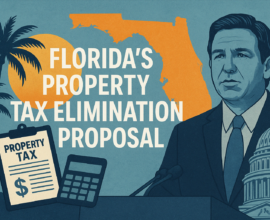How to Snowball your Rental Portfolio for Explosive Growth
Getting discouraged when looking at how long it’s going to take to purchase enough properties to replace your current income (or to save enough money to reach other financial goals)?
With traditional real estate investing resources promoting outdated ideas—such as the need to have a large down payment to buy investment properties or hundreds of thousands of dollars in the bank to pull off a Buy-Rehab-Rent-Refinance-Repeat (BRRRR) deal—investors are often steered away from taking a leap into real estate investing. However, taking that leap and learning about productive and creative ways to grow rental portfolios tends to reap far more financial rewards than traditional real estate investment methods.
Where There Is a Will, There Is a Way
Some investors experience obstacles early on in the process and cease acquiring more investments. Others never receive the returns they expect and decide to completely abandon real estate as a vehicle for growing their wealth. These investors lack a key characteristic that’s essential for real estate success—the ability to employ creativity to make deals happen that otherwise would not be possible.
Examples of such creativity are owner financing, joint ventures, syndication, and like-kind exchanges. Keep reading for details on each.
Owner Financing
Owner financing is a process that is often sought out but rarely executed well in the real estate community. It’s also frequently used as a cop-out for someone who has not taken the necessary steps to get into real estate investing. New investors claim they are waiting for the perfect deal to come along—one that’s owner financed and has a high cash-on-cash return.
Owner-financed deals rarely present themselves as such right out of the gate and are typically formed from a place of creativity when the seller has a problem that the investor can solve. Sellers hardly ever list their homes on the market and offer owner financing, but it does occur occasionally.
More often, an investor finds a landlord or homeowner who has property that they no longer desire to actively manage but still require some monthly cash flow to maintain their desired lifestyle. A clever investor would suggest owner financing as a solution to this problem, with a reasonable down payment in addition to monthly payments to the seller to satisfy their cash requirements. This process would allow the investor to acquire the property for a lower monthly payment, and sometimes an even lower down payment.
Although sellers who are willing to do owner financing frequently request a larger down payment, many are willing to do a miniscule down payment in exchange for a larger monthly payment. This is not as common, but when seeking to get into real estate investing with as little money as possible out of pocket, it’s an avenue that must be pursued on target deals.
With owner financing, an investor can go from closing one or two deals annually to one or two deals each month. Creative investors are using owner financing to quickly snowball their portfolios and monthly cash flow.
Joint Ventures
Joint ventures. What are they, and how does an investor become part of one? A joint venture is defined by the Oxford Dictionary as “a commercial enterprise undertaken jointly by two or more parties which otherwise retain their distinct identities.”
How does this allow investors to snowball their rental portfolios? Through joint venturing with other investors, it’s possible to make your money go a lot further and to have equity in many more deals.
Investors either have time and a valuable skill set or capital to invest. An investor with money will be interested in a joint venture with someone in an opposite but complementary position. Someone who brings a helpful skill set to the table, such as being reasonably handy and a great problem solver, is ideal.
Here’s an example. You have renovated the bathroom and kitchen in your home. Anytime something breaks, you fix it. You find a potential partner to go into a joint venture with, and they have what you do not—capital that needs to be invested.
In this instance, you offer your services of renovating a property that you both want to use as a BRRRR property. You receive an equity share of the property for your contribution. This is often referred to as “sweat equity.”
Sweat equity is not just earned via physical labor; it can include any skill sets that are valuable to other investors. Expertise in financial modeling or knowledge of construction (e.g., being able to price out renovations and materials) are just a few examples of skill sets that are commonly offered in return for sweat equity in a deal.
Rather than doing one deal by themselves every year or two, investors across the country are teaming up with others in joint ventures and tackling dozens of deals each year. Especially for new investors who lack large amounts of capital, this is by far one of the most effective methods for snowballing your rental portfolio.
Syndication
Through syndication, many an investor has made their name. Syndication is usually the result of investors teaming up with a seasoned investor to tackle larger and more sophisticated investments that none of them could take on individually.
There is a certain point in the investment process when it no longer makes much sense to acquire single-family properties or smaller packages. The amount of capital that needs to be invested piles up rather quickly. Syndication allows investors to buy large packages of off market properties, multifamily portfolios, industrial and retail projects, and other large purchases that require more capital than most individuals have readily available to invest in one project.
One significant individual in the syndication process, the sponsor, is responsible for sourcing and putting together real estate deals that hit certain investment criteria. They typically have an exit strategy within 3, 5, 7, or 10 years, depending on the deal and investor requirements.
These deals are presented to a group of passive investors that uses the sponsor as a conduit for obtaining institutional-level acquisitions. The sponsor makes sure that the deal is properly underwritten. In exchange for their hard work (another example of sweat equity), they are compensated with an acquisition fee and an agreed-upon equity percentage in the deal itself regardless of their capital contributions.
By teaming up with other investors to syndicate funds, the investor can go from buying one unit at a time to tackling massive deals such as the purchase of a 370-unit multifamily property. When investors syndicate deals, they measure their portfolios by the dollar amount of assets under management rather than the number of houses or units. Investing velocity picks up rapidly and more sophisticated individuals are drawn to invest with them. This scenario is often seen when studying syndicators and their success—once they have taken down their first deal, the subsequent deals come quickly.
1031 Exchange
For investors who have the long game in mind, one critical method is exchanging like-kind properties in a process called a 1031 exchange.
When a property owner decides they are ready to sell one of their current properties and invest in another, there is a way to reallocate those funds into another property without having to pay taxes on the gains from the sale.
The property is declared a “1031 exchange” property when it is being sold. The seller then has 45 days from the time the designated property closes to select three target properties for acquisition. From the time the seller closes on their property, they have 180 days to close on any one of the target properties. All proceeds from the sale of their designated property are held in escrow within an independent exchange company and then used to purchase the target property on behalf of the seller.
This is one of the best ways to harness the power of time and appreciation to snowball a rental portfolio. An investor who buys a single-family rental for $200,000 and holds on to it for several years as the neighborhood becomes more desirable receives an offer for $450,000. They decide to do a 1031 exchange. The proceeds from the sale are used for a quadplex, and the investor doesn’t have to pay taxes on the gains from the initial sale of their single-family rental.
Time and time again, investors have taken advantage of 1031 exchanges to snowball their portfolios from single-family properties to much larger deals. Over the course of 12 months, investors have turned portfolios of eight rental houses into 40 multifamily units. Those investors turned each of their units into another five units owned and producing cash flow. Several years down the line, they do so again and continue the process of explosive portfolio growth.
Although a longer process, there are few investors who have been in the game for decades and do not utilize this technique to snowball their portfolios. Patience and buying right are crucial to making the most out of exchanges, so speak to an independent exchange expert in your area if you are considering doing a 1031 exchange in the future.
Creativity Is Paramount in Snowballing Success
Creativity is essential when looking to snowball your rental portfolio. If you are struggling to acquire enough properties to grow as much as you would like, take the time to implement these models that have been proven by thousands of other investors.
Rather than using just one of these strategies, pick and choose those which best align with your strengths and lean into them. Combine them together to further leverage them to your advantage and allow you to scale up more rapidly. For example, team up with other investors in a joint venture situation and use your combined strength to find more owner financing deals or seek out multifamily deals to syndicate together. Once your assets under management have reached critical mass and seen steady appreciation, take advantage of 1031 exchanges.
Investors around the world have shared their stories of growing from a handful of rental houses to hundreds of millions of dollars of assets under management. Follow those who have served as bridge builders before us and left clues to their success—get creative and snowball your rental portfolio today.








